When you first start a NoNO format (Nostalgic Non-Official; this is how I like to call them 😃), you normally go straight to your old well-known decks and archetypes. This happened to me with Old School, then with Premodern and, of course, now with Classic Legacy. However, the more you play it, the more you start to explore the depths of its closed card pool and start figuring out potential interactions that have never been popular back in the day.
I think this is one of the cool things about NoNO formats. When a format is alive, meaning you have new cards coming to the format at a certain pace dictated by WotC, you normally don’t have time to explore all the corners of the card pool they offer, primarily because with the new sets coming out new bombs appear that incentivize deck building moving forward. Nevertheless, when a format has its card pool completely closed we have all the time in the world to explore and brew. We often will brew decks that look cool but might not be very powerful or competitive but sometimes we can find new powerful interactions, synergies or combinations that might, not only, find a place in the format but maybe even break it to some extent!
I am a Spike but also a brewer at heart, I identify myself as a Spike-Johnny Hybrid based on the psychographic profiles defined by Mark Rosewater in 2013. Therefore, you can expect from me to try to find new brews and explore the obscure, or not so obscure, corners of the vast card pool that Classic Legacy has to offer.

Motivation
And here we are. Back to the brewery with an idea that got inspired by a comment a friend of mine (Àlex, you know him because he wrote the intro article in this blog) made in our local Whatsapp group. He essentially pointed out how awesome the interaction was between Grim Lavamancer + Basilisk Collar.
That was the spark that got my brain going. My immediate next thought was: “what about Goblin Sharpshooter + Basilisk Collar?”
What would be the right shell to add this synergy?
After some thought, I ended up in a Survival of the Fittest build. Survival of the Fittest is well-known for having the capacity to put together creature synergies with ease. The next piece we needed was a creature that granted access to Basilisk Collar. Of course, one of the most efficient creatures for this quest is no other than Stoneforge Mystic.
Seems we are set in RWG, aka Naya, colors. The only remaining thing was to find a shell with a sound plan to make this a reality, so I thought about Zoo.
As another friend of mine and Survival of the Fittest expert, Artur, always says: “the best Survival decks are those that can play their plan out nicely even without Survival in play”. And this is what I tried to do.
Decklist
Creatures (29)
 Scryb Ranger
Scryb Ranger
1
 Stingscourger
Stingscourger
1
 Gaddock Teeg
Gaddock Teeg
1
 Anger
Anger
1
 Squee, Goblin Nabob
Squee, Goblin Nabob
1
 Goblin Sharpshooter
Goblin Sharpshooter
1
 Stoneforge Mystic
Stoneforge Mystic
2
 Grim Lavamancer
Grim Lavamancer
2
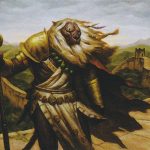 Qasali Pridemage
Qasali Pridemage
3
 Wild Nacatl
Wild Nacatl
4
 Loam Lion
Loam Lion
4
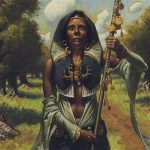 Noble Hierarch
Noble Hierarch
4
 Tarmogoyf
Tarmogoyf
4
Spells (4)
 Lightning Bolt
Lightning Bolt
4
Enchantments (4)
 Survival of the Fittest
Survival of the Fittest
4
Artifacts (3)
 Umezawa’s Jitte
Umezawa’s Jitte
1
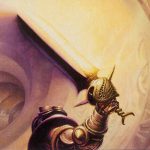 Sword of Light and Shadow
Sword of Light and Shadow
1
 Basilisk Collar
Basilisk Collar
1
Lands (20)
 Forest
Forest
1
 Mountain
Mountain
1
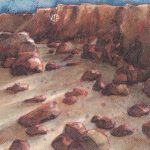 Plateau
Plateau
2
 Windswept Heath
Windswept Heath
2
 Arid Mesa
Arid Mesa
2
 Savannah
Savannah
4
 Taiga
Taiga
4
 Wooded Foothills
Wooded Foothills
4
Gameplay
The main plan of the deck is to beatdown the opponent with efficient creatures just like traditional Naya Zoo decks tend to do. However, the deck is built to be slightly slower than your regular Naya Zoo, it plays closer to the way Big Zoo decks do. You sacrifice speed in favor of a more stable late game in this case, instead of Planeswalkers we use Survival of the Fittest as our main end game tool.
Once Survival lands, we have access to a set of silver bullets that will help us adapt the plan to what our opponent is trying to do and, at the same time, it will grant a card advantage engine to make sure we don’t run out of gas.
Card choices
Core creatures
Wild Nacatl: this is the most efficient 1-drop in the format. A 3/3 body for a single mana can go distance and apply enough pressure to put you in a position where some reach can close out the game quite quickly if unchecked. It does require some work on the manabase but, hopefully, this will be easily sorted having access to the powerful dual lands.
Loam Lion: supplementing Nacatl we have this white version of Kird Ape. The reason for choosing Loam Lion over Kird Ape is twofold. On the one hand, it can be played off a Noble Hierarch and, on the other hand, it is resistant to red hate like Hydroblast, Blue Elemental Blast or Circle of Protection: Red.
Qasali Pridemage: a 2/2 for 2 mana is nothing spectacular. However, if the Grizzly Bear comes with a built-in Disenchant and an aggressive ability like Exalted, then it starts looking a lot better! Curving out your efficient 1-drops into this one can set up a good early aggression and it also helps breaking the symmetry in the “Goyf wars” (namely those board states where two Tarmogoyfs are staring at each other across the battlefield and not daring to attack because they will be blocked for free).
Noble Hierarch: another Exalted creature, but this one is supporting the mana hunger from Survival of the Fittest in the late game. She also plays the role of mana fixer.
Tarmogoyf: I don’t think this guy needs any introduction. Tarmogoyf is, arguably, the best creature in the format. Oftentimes a 4/5 very early in the game that can be both a great aggressor and an unpassable wall. Extra spicy when it is combined with Anger for haste!
The toolbox
Stoneforge Mystic: this girl grants some flexibility. Being able to fetch the right equipment at the right time can shift the tides of a game quite quickly. It can turn Grim Lavamacer or Goblin Sharpshooter into killing machines that also gain us some lives (as we said before with Basilisk Collar) or find a Jitte to overcome the aggression of the opponent, among other things.
Grim Lavamancer: a great tool vs tribal or other aggro decks and, at the same time, give us some reach to close out the games if unchecked.
Scryb Ranger: I was not entirely sure if this was the right call or was it Quirion Ranger? I was certain that I wanted to have access to this kind of ability. Both can generate extra mana, which is specially relevant with Survival in play, and they offer some nice combat tricks or extra fire from Grim Lavamancer or Goblin Sharpshooter. Quirion Ranger is cheaper which means she generates more mana the turn she is played but Scryb Ranger, for just 1 extra colorless mana has Flash, Flying and has Protection from Blue! Flash is relevant when you are playing under a CounterTop soft-lock; diversifying costs across different turns is one of the best ways to overcome that lock. Flying is also a relevant ability, especially in a deck with equipment; Scryb Ranger makes a very good equipment bearer. Last, but not least, the Protection from Blue can certainly help kill Jace, especially in combination with a Sword or Jitte, or some number of Exalted creatures.
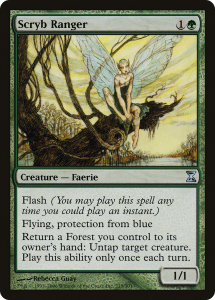
Stingscourger: this little goblin is a good tempo utility card. It can help you push some damage through by removing the best blocker. It is also a good silver bullet to confront decks like Reanimator or Sneak & Show. Note that you can bounce an Emrakul, the Aeons Torn using its ETB ability. While the Echo can be annoying, we can also use it to our advantage by recurring it over and over with either Sword of Light and Shadow or Genesis.
Gaddock Teeg: it is good to have this guy in almost any Survival deck with access to GW. He does not only put some serious pressure on certain combo decks in the format (like all Storm variants) but also protects us from opposing Force of Will and Planeswalkers, namely Jace and Elspeth.
Goblin Sharpshooter: this is a tribal deck killer. Go find it versus Goblins or Merfolks and you certainly will have an edge. He is also great at unlocking the aforementioned “Goyf Wars”. Finally, equip the little green guy with a Basilisk Collar to clean up the entire opponent’s board!
The engine
Survival of the Fittest: an extremely powerful toolbox and card advantage engine. Once you resolve Survival of the Fittest, the attrition wars will no longer be a problem. It also gives us the flexibility we want to adapt our board state to the most convenient one in any match-up.
Anger: together with Survival, the red Incarnation can change the pace of the game all of a sudden. Anger is a nightmare for any control opponent, forcing them to deal with your threats at instant speed or take some damage no matter what. Anger helps keep all those sorcery-speed mass removal spells in check. Worst case scenario, attacks for 2 with haste! Overall, it has a decent floor and a very high ceiling.
Squee, Goblin Nabob: a no brainer with Survival of the Fittest, isn’t he? The more turns you play the bigger the card advantage gap will be between you and your opponent. In this particular build, given we have access to red mana, it has the additional perk of being a recurring blocker if we ever need it against certain decks in the format, like Canadian Threshold.
Other utility cards
Umezawa’s Jitte: kind of the swiss army knife in the deck. Gains you lives, kills small dudes and pumps your creatures. It does so much and is easily accessible with Stoneforge Mystic. It would be, more often than not, your go to equipment with your first Mystic.
Sword of Light and Shadow: I like this sword a lot in this build. Besides the stats buff and the color protection – relevant against Swords to Plowshares,Tombstalker, or the annoying BItterblossom tokens – it comes with some lifegain and the ability to recur creatures. This recursion engine can be incredibly powerful with some particular creatures we play, e.g. Qasali Pridemage or Stingscourger, and even Faerie Macabre!
Basilisk Collar: I think I talked enough about this card already. This is the reason why I am writing this article. But, besides the synergy with Grim Lavamancer and Goblin Sharpshooter, it is always nice to have a big badass Tarmogoyf equipped with Basilisk Collar; attacking Exalted to help you win any race!
Lightning Bolt: this might be just the cherry on top. It is efficient interaction and, at the same time, some extra reach that can help you close up some games in a, more or less, unexpected manner. I had a hard time deciding whether Lightning Bolt or Path to Exile (or even Swords to Plowshares) was the right interaction card for the deck. I finally decided to go for Bolt to try to reinforce the aggressive nature of the deck, this might vary depending on how the meta evolves, if we start seeing more Knight of the Reliquary across the board I might reconsider this decision.
Sideboard
Path to Exile: extra cheap interaction vs decks that matters, namely anything aggressive or with big bodies. Might Swords to Plowshares be the better choice? Well, they might but the life gain can be very relevant when your plan is to beatdown hard and fast.
Krosan Grip: this was a last minute addition to enhance our match-up vs Counterbalance decks. They certainly have some other applications but the Split Second is just so critical vs CounterTop.
Ethersworn Canonist: an extra tool vs Storm decks. I think it’s important to diversify hate and this one adds up to Gaddock Teeg and the card below.
Pyrostatic Pillar: more Storm hate. We are naturally very soft to Storm decks. Even though we can close fast, our lack of interaction makes it very pleasant for the Storm players to fight against us. There are some other options for this slot that I will comment on in the “Maybeboard” section. I like Pillar not only because it helps our plan but also because it is an Enchantment, which is a different type to Creatures and Artifacts that we also play and, as I said, diversifying the types of hate is very useful to force the opponents to sideboard more than they would like to.
Pyroblast: all around answer to counter magic and other blue threats. It is a great card vs CounterTop decks, Merfolks and also any sort of Show and Tell-powered deck.
Faerie Macabre: this is my go to graveyard hate piece. The fact that it is free and can be fetched with Survival makes it very appealing. It can also create a soft-lock in combination with Genesis, something your Dredge and Reanimator opponents might end up hating.
Genesis: It comes in handy vs midrange decks where value matters over speed. It can also help navigate some graveyard hate your opponent might add as it can be used as a pseudo-Squee as a source of card advantage. It is also enabling some soft-locks in combination with Faerie Macabre or Stingscourger.
Maybeboard
Of course, this is just a thought experiment and far from a refined deck. This means a lot of loose ends still exist. In this section, I wanted to share with you some cards I have considered but, for the moment, put down in favor of the 75 presented above. All these cards have some merit and can be very impactful with some changes in the deck or making it a better fit to fight certain metagame shifts.
Basking Rootwalla: this is one I have considered very seriously. It is an early drop, even though not the most amazing one, that can present a real threat vs slower decks. It has also incredibly good synergy with Survival of the Fittest (even better if we played some number of Gaea’s Cradle, which would end up in a very different texture: more midrange). Being able to, end of turn, play a bunch of Rootwallas for no card disadvantage can be huge and particularly useful vs CounterTop, they do help with the fact of playing alternate costs both during your turn and your opponent’ turn, so you make them spend a lot more mana spinning the top. My main consideration was whether to play the 4 Loam Lions or a full set of Rootwallas. Lions seem to fit the theme of the deck better overall.

Knight of the Reliquary: a big vanilla that can hit real hard. More dangerous when it has haste (with Anger). It might be good to help push some damage, maybe playing a couple of them that can be fetched in a timely manner would be good. However, they don’t get along very well with Grim Lavamancer, Squee or Anger. It would be also very enticing to include a small package of utility lands (Karakas, Bojuka Bog, Wasteland, …) to go along with them, but that would require a major re-work of the deck’s concept.
Eternal Witness: it seems a bit weird not to play, at least, 1 copy of Eternal Witness in any Survival build. I think, though, that it does not align with our aggro plan. Yes, it is good to have a Regrowth-effect that we can fetch with Survival in response to it being destroyed (unless it is with a Korsan Grip) to take it back, but Survival is not our main plan. It feels a better tool in slower Survival decks.
Vexing Shusher: another good tool vs permission heavy decks and CounterTop. It seems OK but, at the end of the day, is just a 2/2 that eats up a lot of mana. I can see good reasons to play it in Burn decks, since they are pushing some big damage spells through (like Price of Progress), but here, where you would be just landing some incremental value cards, does not seem as appealing, also because they die very easily and we have no great tools to protect him. Maybe with Mother of Runes? But, again, that would be a completely different approach.
Loaming Shaman: this would be a panic button in case things get out of hand vs your graveyard opponents, to complement your Faerie Macabres. The fact that its effect happens at sorcery speed is quite underwhelming and I feel that, by the time you might need it, it would be too late, as most of the graveyard strategies are very fast. But I might be wrong, it deserves some testing.
Jötun Grunt: this is a nice suggestion from Maxi (our Argentinian Survival expert!). Pretty much in the line of Loaming Shaman but this one adds incremental value. The fact that can’t be easily bolted is definitely a plus. However, it does not play well with our own Tarmogoyf and other graveyard shenanigans, namely Grim Lavamancer, Anger , … It is an underplayed creature in the format for sure.
Thorn of Amethyst: my first version of the list played 3 of these instead of the 3x Pyrostatic Pillars. Not sure which one is better. I decided to go for Pillars to reinforce the aggressive nature of the deck and diversify the threat types. Pillars can’t be bounced with Hurkyl’s Recall or Rebuild. But those can be protected with Pyroblast… Well, again, not sure what the right answer is and I think it may depend on the metagame you expect and some testing evidence.
Mindbreak Trap: I like these a lot in ultra aggressive decks with no other interaction as you give very little window to your Storm opponent and they cut certain relevant lines (like Ill-Gotten Gains). Even though we are set to be aggressive, I’m not sure we are aggressive enough to benefit from Mindbreak Trap. They also have the problem that you might want 4x Mindbreak Trap in your sideboard to draw as many as you can and as early as possible. That is a lot of sideboard space for such a narrow card.
Kitchen Finks/ Lone Missionary: those are both nice life-gain creatures. Finks being the better card overall, but Missionary is a lot more immediate, becoming a virtual card advantage on the spot vs heavy reach decks like burn. The reason why they are not in the sideboard, as they don’t belong to the main, is because the current metagame I face is very low on red reach decks. If things turn around, they deserve to be considered again.
Harmonic Sliver: this would complement Qasali Pridemage in dealing with pesky Artifacts of Enchantments. The main reason to play it would be to have a different cost in a creature that gets rid of the Counterbalance but, at this point, wouldn’t it be better to just play another Krosan Grip? I’m not sure yet.
Choke: certainly a haymaker in a blue-infested metagame. A bit too slow for my taste, it feels more like a midrange hate tool than an aggressive one. It is in my “want to test” list but has not made the cut for now.
Parting thoughts
Hope you have enjoyed the reading as much as I enjoyed brewing!
I was wondering why this was not a popular deck back then? My first thought, which is always the default answer to these questions, was that maybe it was not powerful enough. However, I don’t think this is the case. I think the reason why it was not a thing is because by that time Vengevine was monopolizing the Survival share of the meta, and for good reasons, and shortly after, Survival became banned. Maybe, if Vengevine were not a thing, we would have enjoyed a lot more flavors of this amazing Enchantment.
What do you think?
Let me know in the Facebook Group or Discord server your thoughts and feedback!
Greetings from the brewery! 🍻